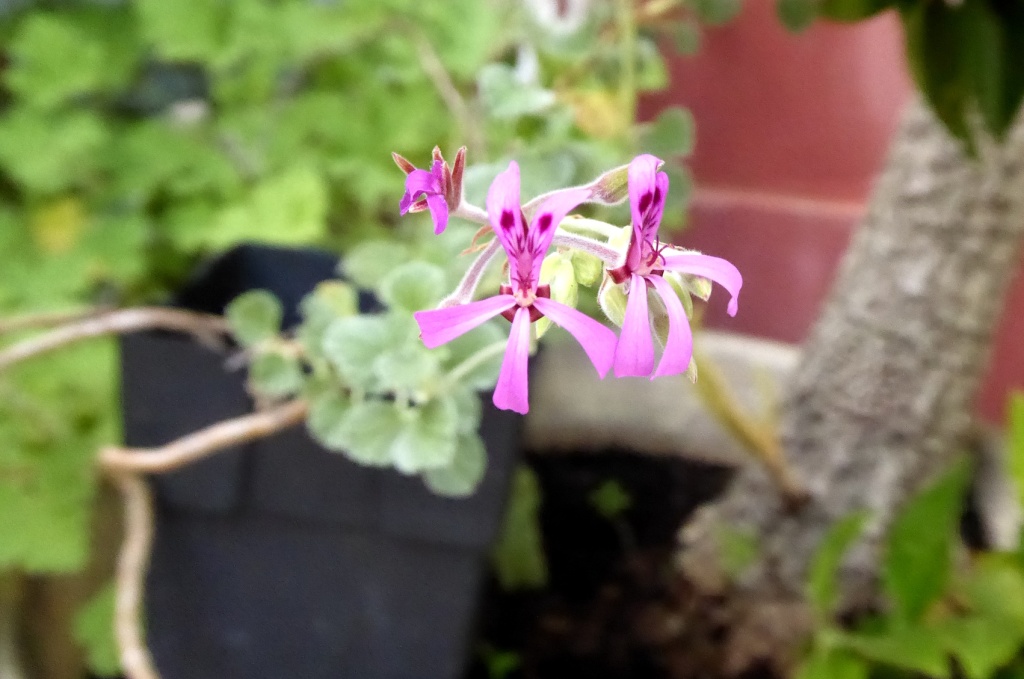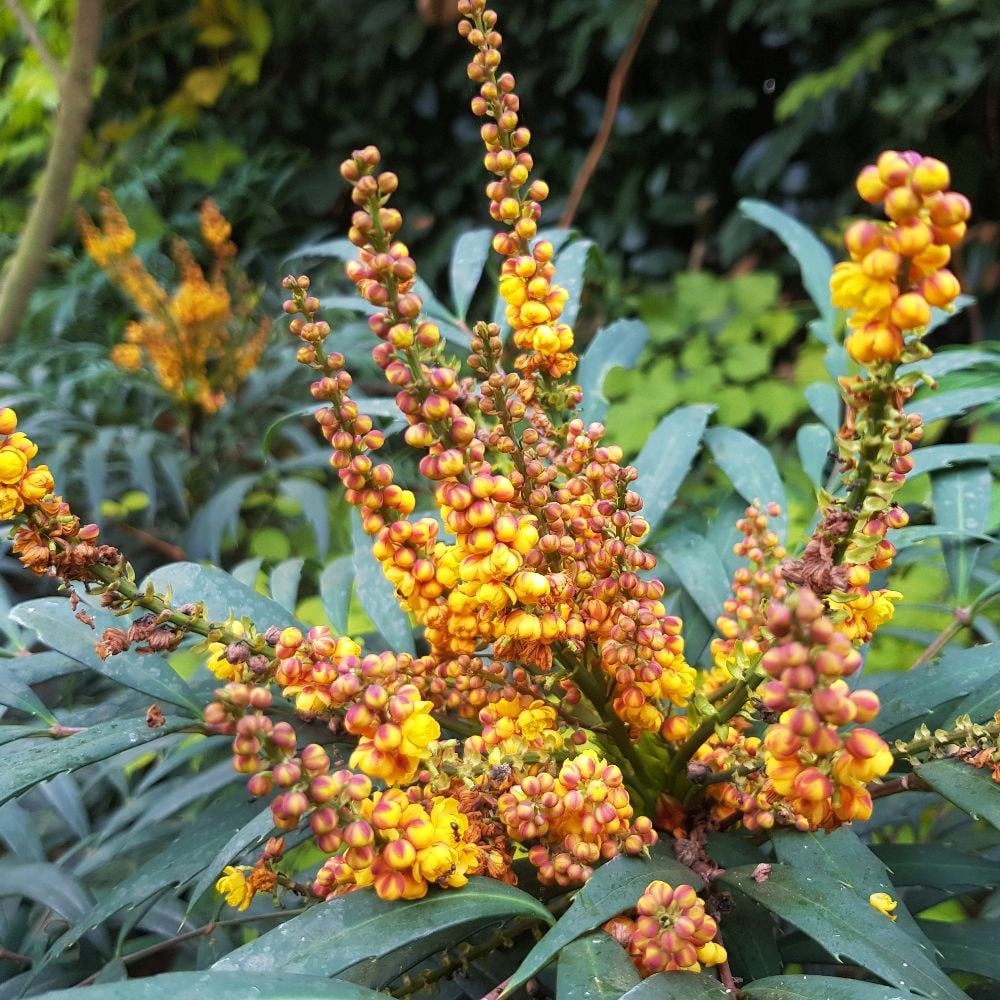
Thalictrum delavayi is a lovely plant, giving 6 months worth of interest, from fluffy, feathery foliage in the Spring, to masses of bobbing pink flowers in constant movement in early Summer, and then these delightful hat-shaped seed hads, which do yet more bobbing in any breeze. Not fussy, needs regular moisture, it’s also an elegant tall plant, which adds movement to other plants in a very complementary fashion. I grow mine in a large container in a semi-shaded part of the courtyard, but they grow well in normal garden soil in the UK.
This is an inbetween time of year, in September. It still can feel like high summer in the afternoon, but mornings and evenings are cooler, though not yet mosquito-free. Some plants really relish the conditions. I am so fond of this Salvia, Salvia spathacea, the Humming Bird sage. Sadly, we don’t have humming birds, but this Salvia flowers whenever it fancies it. It flowered like mad last December, then again in April, and now again now. The flowerspikes appear above the fruity smelling foliage and seem to wait for ever till the right moment. It spreads slowly, gently insisting against other plants, and has colonised an area in the Barn Garden, where it seems happy even in the winter.

Rhamnus frangula ‘Fine Line’ is another slow and discreetly growing plant, that I often forget I have, but now in it’s third year in the garden it is beginning to grow with a bit more alacrity. And so it is starting to take it’s rightful place in the garden- even though what you see is all it does. But it does it beautifully. Gently spraying branches of delicate foliage, and a neat, columnar shape, it slots in really well as an accent anywhere. Books suggest it can grow to 2.5m in the end, but it would not disrupt even at that height in my view. It just gets better and better.

In a recent post, I looked forward to the fabulous, and common, but so worth it, Anemone ‘Honorine Jobert’ flowering for the first time in the Barn Garden. It was first spotted by a Mr Jobert, a nurseryman, as a mutation in a planting of pink anemones in 1851 in Verdun in northern France. He named it for his daughter, and he brought it to market in 1858. There have been many newer varieties, but ‘Honorine’ stands the test of time. An established clump back in Tostat, the old garden, handled one of the hottest spots in the garden, contrary to advice in books. Give it time to develop the roots it needs and you have it for years. I particularly treasure the luminosity of the flowers in semi-shade, as I have tried to capture in this morning’s photograph.

Another champion plant that has been flowering since February on the old wall in the Barn Garden, is Abutilon megapotamicum. It is a bit of a straggler, so best pinned into a structure or tied to wires on a wall, but the reward is this myriad of small chinese lanterns bobbing about in any breath of air. So jolly, and so like a child’s handmade decoration somehow. But do manage it, if left to romp on the ground it will become a thicket.

Small and not magenta-black as usually described, I nevertheless love my Pelargonium sidoides. The dainty flowers are only slightly bigger than my little fingernail, and pop up at the end of long, twirling stems that I just let be, as they have an elegance of their own. You can just see them in the background of the photograph. It stays outside all winter, I just keep it out of the wet on a windowledge.

My last champion plant for September is Solidago rugosa ‘Fireworks’. The best Solidago ever. It drapes, it leans without bothering other plants, it can look fabulous isolated as a specimen making a vase shaped explosion, hence the name ‘Fireworks’. Unlike other Solidagos which can burst out all over the garden, this variety is discreet, clumps up, but doesn’t chase itself round the garden. Quite the best.




































































